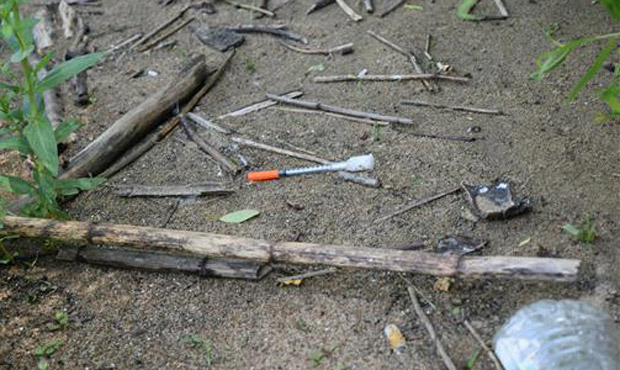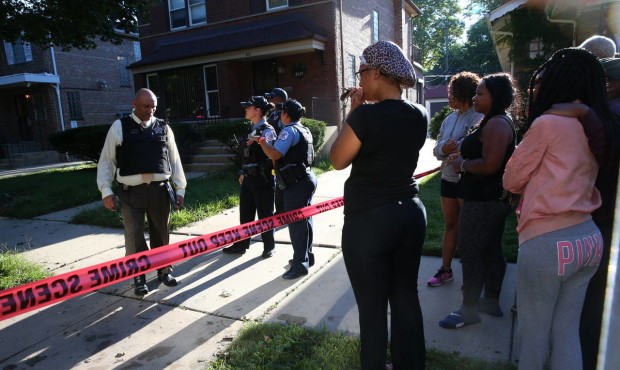Todd Herman
Love it or hate it, WSDOT defends I-405 tolls
 The new express toll lanes on I-405 have received heavy criticism from drivers. WSDOT's CEO Lynn Peterson says that the system is working for most people. (WSDOT)
The new express toll lanes on I-405 have received heavy criticism from drivers. WSDOT's CEO Lynn Peterson says that the system is working for most people. (WSDOT)
As CEO of the Washington State Department of Transportation, Lynn Peterson has heard her fair share of criticism over I-405’s new express toll lane system. And she admits that there has been some negative feedback.
“But I am also getting stories about people who — literally one person was ready to commit suicide because of their life and how it was being impacted by I-405,” Peterson told KTTH’s Todd Herman. “They wrote us and said, ‘you saved my life.'”
“They were able to actually make a decision to forgo some other thing in their life,” she said.
But then there are other voices along the corridor. Many allege that since WSDOT implemented two express toll lanes, alongside general purpose lanes, traffic has slowed. Some drivers started Stop405tolls.org, a website in opposition of the tolling system. It started an online petition calling for Legislators to stop tolling I-405. That online petition has nearly reached its goal of 20,000 signatures.
There’s also State Rep. Mark Harmsworth (R-Mill Creek) who is aiming to put forth a bill to dramatically alter I-405’s tolling system.
Herman’s own show has been hit with a swarm of emails from drivers complaining about I-405’s toll lanes.
“I have an email from somebody who dropped out of college because they can’t afford the drive,” Herman said.
“I have an email from someone who says, ‘I’m a young person. When I go to work, I get to make a choice — either I’m late for work or I don’t eat lunch,'” he said. “What choice should that person make?”
Related: Life in the Lexus lanes on I-405
“They are going to have to manage their finances on a personal level,” Peterson responded. “I can’t make that choice for them. What we are hoping to do is impact, in a positive way, as many people as we can. And that is benefit to the general-purpose lane users and a benefit to the toll-lane users.
“On the flip side there are people who need to be at work on time, or they’ll lose their job,” she added. “They need that choice. Making an entire work day and getting paid, or getting laid off, they are going to make a decision to use that lane.”
One sentiment that Peterson said she rejects is that it creates a class division on the road.
“It’s not a rich person’s lane, it’s actually a benefit to all incomes and it’s been proven time and time again that people will use it when they need to,” she said.
On average, I-405’s express toll lanes are costing drivers $3.75 in the morning and $3 in the evening. The tolls spiked twice in two days recently — reaching $9.75 on the evening of Dec. 8 and the morning of Dec. 9. It peaked Thursday morning by reaching $10 for the first time.
The system
Since the new express toll lanes opened in late September, there has also been criticism that the system creates a profit incentive for a Texas-based company to create congestion in the general purpose lanes, therefore encouraging people to jump in the express lanes and pay a high toll.
This is not accurate, Peterson said.
“Tolling is very specific and it is being used in the state, just like in other states, to pay for a specific facility or for congestion management on a corridor that’s experiencing heavy congestion,” Peterson said.
And congestion is the problem on I-405. It was a problem on I-405 long before the toll lanes were installed, Peterson noted. And today’s congestion is merely a continuation of that problem. The toll lanes therefore did not create the congestion, rather, they are offering a way to manage it.
“What we’re trying to do is provide more choice in the end,” she said. “The real issue here is how do we provide for some mobility? Some people want to buy back their time because their time at that moment is worth a lot. Especially the person who has to get to daycare, and they are now late because of congestion and they make that choice to pay to buy back their time.”
The idea is that when a person wants to pay the toll for an express ride, they take themselves out of the general purpose lanes, alleviating congestion for other drivers. Peterson said that it is working for the majority of drivers on the freeway. However, there are some trips that have been negatively affected, she admits. She said most of those trips are shorter rides.
“What we are trying to manage for is getting the most number of people through the corridor at a peak time when we will never be able to move everybody at the rate they want to be as if no one else is in the corridor,” Peterson said.
“What we cannot do, at this point, is build our way out of congestion,” she added. “There is no amount of congestion relief we can put out there in a quick way. We have to rely on operation, and people making the most informed decisions they can based on their needs, travel time and costs.”
As for the Texas company, although it is based in the Lone Star State, all the employees and operation is local. According to a WSDOT spokesperson, there are about 120 people employed by the company. Those are the people you see when you walk into a Good to Go station or call the service on the phone. They also monitor the technology used to run the toll system on I-405, Highway 520 and other tolled roads.
And that company has no say in what is charged. That is actually controlled by a computer algorithm that measures the traffic speed on I-405 and calculates how many cars should be in the express toll lanes to keep things moving smoothly. Then it figures a charge to either incentivize a driver to use the toll lanes or to discourage express use should the toll lanes be too full.
To handle all this, the private company gets 55 percent of gross revenues from the I-405 tolls.
“It’s to operate, maintain and run the tolling system with a small, obviously, profit margin, which is part of any contract we have,” Peterson said.
That means, on average, 54 cents of every toll paid on I-405 goes toward the operation of collecting tolls, according to WSDOT. The customer service center gets 20 out of the 54 cents.
Then another company receives 15 cents from every toll, which goes toward operations and maintenance of the system. That company is based in Rockville, Md. It employs about six people in the Seattle area.
The state’s operations and credit card processing receives 19 cents from the toll. That goes toward the state’s staff costs, consulting support, and other related costs, such as rent, phones, computers, data collection tools, supplies, etc.





































Comments